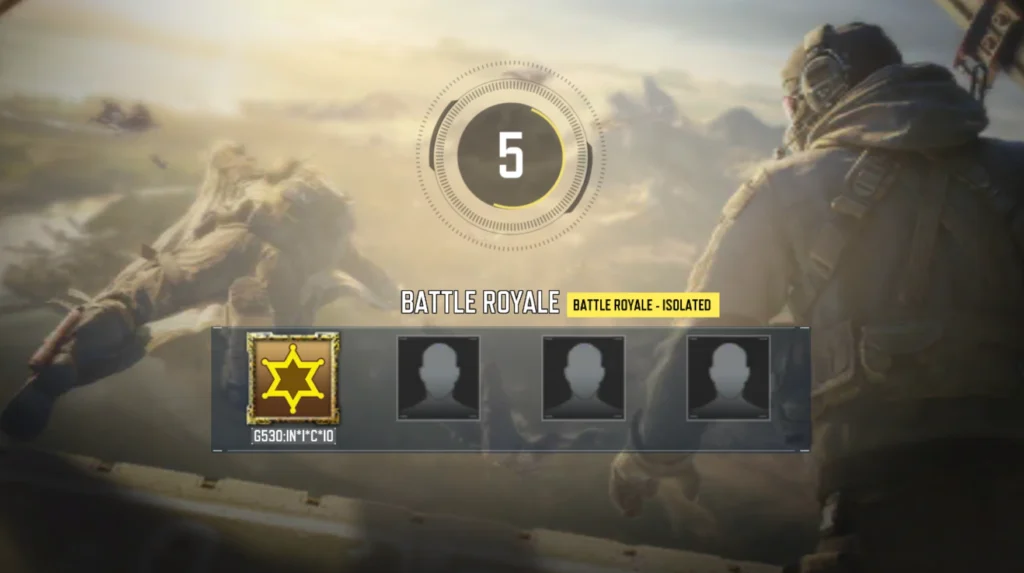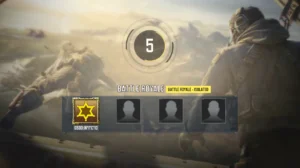7 Powerful Insights Into the Matchmaking System in Call of Duty: Mobile
“Curious about how matchmaking works in Call of Duty: Mobile? Discover 7 powerful insights into CODM’s system and learn how it affects your rank, lobbies, and gameplay experience!”
The Evolution and the Current State of Matchmaking in Call of Duty: Mobile – A Full-Blown Analysis Introduction
Call of Duty: Mobile was finally released, and since then it has changed the world of mobile gaming. Never before seen such console-quality gameplay on handhelds. But probably one of the most important and highly controversial features is the matchmaking mechanism. This article is going to take a closer look at how it works in COD Mobile, the changes it received over time, and its effect on players altogether.
COD Mobile is undoubtedly one of the most successful mobile games ever made, with more than 650 million downloads worldwide. At its very core lies an elaborate matchmaking system that has been refined and updated since the game’s launch in 2019. The following analysis thoroughly discusses all aspects of the matchmaking process, starting from the very basics up to its future developments.
Understanding the Basics of COD Mobile Matchmaking
Core Matchmaking Architecture
The matchmaking system runs on a multi-tiered architecture system:
Primary Layer:
Player Skill Evaluation
Connection Quality Analysis
Geographical Distribution
Queue Management
Secondary Layer:
Team Compositions Algorithm
Mode Specific Adjustments
Party Size Consideration
Time of Day Optimization
Tertiary Layer:
Anti-Exploitation Systems
Performance Monitoring
Data Collection and Statistical Analysis
Dynamic Adjustments
Matchmaking Works in COD Mobile
In general, it was created with a mindset in which COD Mobile can be both balanced and competitive, as it was set out to bring together gamers with very identical skill levels. A quite accomplished algorithm grants different elements for better matchmaking. Below are the fundamental key parameters included in this matchup mechanism:
SBMM: The very factor that governs match creation is the skill level of a player. It calculates the skill of a player using metrics such as:
Kill/Death ratio (K/D)
Win/Loss ratio
Average damages in a match
Accuracy stats
Pattern of movement and gameplay behavior
Trends in recent performance
Improved Matchmaking Parameters
1. Skill-Based Matchmaking (SBMM)
The system now includes a variety of advanced metrics such as:
Weapon accuracy per category
Objective completion rate
Average score per minute
Movement efficiency metrics
Reaction time analysis
Loadout effectiveness
Map performance
Mode-specific skill ratings
Historical performance trends
Peak performance indicators
2. Advanced Rank Considerations
The ranking system has evolved to include:
Sub-rank divisions
Performance-based rank progression
Rank protection mechanisms
Seasonal rank adjustments
Rank decay systems
Rank verification processes
Cross-season rank correlation
Rank distribution monitoring
Regional rank variations
Skill-to-rank alignment checks
3. Enhanced Connection Quality Management
Modern connection management would include:
Packet loss monitoring
Jitter compensation
Bandwidth optimization
Server load balancing
Regional server allocation
Connection stability tracking
Network path optimization
Cross-region routing
Device performance correlation
Connection quality prediction
Rank-Based Considerations: In ranked matches, the system prioritizes matching players within similar rank brackets to maintain competitive integrity. The ranking system includes:
Rookie
Veteran
Elite
Pro
Master
Grandmaster
Legendary
Connection Quality: It tries to match players with similar ping rates to ensure smooth gameplay, which includes:
Geographic Location
Network Stability
Server proximity
Connection speed

Evolution of Matchmaking
The matchmaking system has gone through quite a few changes and development since the release of COD Mobile:
Early Days (2019-2020) – In-Depth Analysis
Limitations of the very first system:
The very first matchmaking system had a relatively simple pattern. It was more focused on:
Basic player grouping
Geographic location
Simple rank-based grouping
Limited skill assessment
Rudimentary team balancing
Simple connectivity tests
Basic anti-cheat support
Minimal rankings
Limited data collection
Basic queue logic
Regional server restrictions
Simple party matching
Players often experienced significant skill disparities in matches, leading to community feedback and subsequent improvements.
Middle Period – 2021-2022, Great Improvements
Major technological steps forward:
The developers implemented major updates to the matchmaking system:
Use of neural networks
Advanced statistics analysis
Behavior pattern detection
Difficulty adjustment
Improved anti-cheat
Better team composition
Optimized queueing
Regional population balancing
Cross-server matchmaking
Improved party matching
Introduction of more sophisticated SBMM
Enhanced team balancing mechanics
Improved connection-based matching
More stringent rank-based restrictions
Implementation of anti-smurfing measures
State of the Modern System, 2023-present
The modern matchmaking system incorporates advanced features:
AI competence assessment
Real-time performance analysis
Predictive matchmaking
Dynamic server allocation
Improved team synergy calculation
Skill gap minimization
Queue time optimization
Regional population management
Cross-platform considerations
Machine learning algorithms for skill assessment
Dynamic difficulty adjustment
Enhanced anti-exploitation measures
Improved team composition balancing
Impact of Different Game Modes
Ranked Matches – Matchmaking is performed in each game mode differently: Ranked Matches Ranked matches are the most “careful” matchmaking:
Detailed Mechanics
Implementation of strict criteria, including:
Narrow skill range matching
Strict rank-based restrictions
Higher priority on balanced team composition
Small tolerance for skill disparity
Longer queue times to ensure quality matches
Performance-based rank adjustments
Dynamic skill assessment
Balance in team composition
Role-based matching
Map rotation optimization
Mode-specific skill ratings
Queue time management
Party size considerations
Protection for ranks
Anti-boosting
Public Matches – In public matches, these parameters are not so strict:
Flexible Framework
Features of a balanced approach:
Wide range of skill acceptance
Much faster queues
Looser rank consideration
Greater emphasis on connection quality
Great variation in team compositions
Casual skill assessment
Priority on connection
Quick formation of matches
Mixed levels of skill
Relaxed team balance
Map variety priority
Mode rotation
Party size flexibility
New player protection
Matching based on experience
Special Events and Limited-Time Modes – Unique Considerations
Special Events and Limited Time Modes
Most of the special events and limited-time modes have some modifications in their matchmaking parameter:
Balanced between ranked and public match criteria
Special considerations for new game mechanics
Adjusted skill matching for unique gameplay elements
Modified team balancing for event-specific objectives
Challenges and Controversies
The matchmaking system has gone through several challenges and controversies.
Skill-Based Matchmaking Debate
The introduction of SBMM has been very controversial:
Pros:
More evenly matched games for the average player
Better retention of new players
Less exploitation of players due to a skill gap
More competitive experience in the game
Easier to learn as a newer player
Cons:
Constant challenging games for high-skilled players
Increased queue times for extreme skill brackets
Possible manipulation by intentionally reducing performance
Less variety within match difficulties
Accusations of “sweaty” gameplay at high-level gameplay
Technical Issues
There are many technical issues that impact matchmaking quality:
Server stability and maintenance
Regional differences in player populations
Peak/off-peak hour differences
Device performance differences
Network infrastructure limitations
Solutions and Improvements
Developers have implemented various solutions to solve different matchmaking challenges. Technical Optimizations
Server-side improvements:
Better server capacity
Improved network routing
Better region-based distribution
Reduced latency handling
More efficient matchmaking calculation
Client-side optimizations:
Improved device performance detection
Improved connection quality assessment
Better data collection to serve matchmaking
Reduced resource consumption
Speed up queue processing
Algorithm Refinements
The matchmaking algorithm has been tuned to:
Pit skill groups together more evenly
Reduce very large skill gaps
Create better team compositions
Handle edge cases more gracefully
Adapt to changing player populations
The Role of Player Feedback
Player feedback has been instrumental in developing the matchmaking system:
Community Input
The development team actively considers:
Feedback on social media
Discussion threads in the forums
Professional players’ input
Recommendations from tournament organizers
Content creators’ suggestions
Data-Driven Improvements
Improvements are based on:
Analysis of match statistics, player behavior patterns, queue time data, performance metrics, and player retention rates are some of the things examined.
Future of COD Mobile Matchmaking
The matchmaking system keeps changing with:
Upcoming Improvements
Planned enhancements include:
More sophisticated skill assessment
Better handling of party matchmaking
Enhanced regional matching
Improved team balancing
Reduced queue times for extreme skill brackets
Technological Advancements
Future developments may incorporate:
AI-driven matchmaking optimization
Advanced performance prediction
Real-time adjustment systems
Enhanced anti-exploitation measures
Improved server infrastructure
Unique parameters for the following:
Event-specific balancing
Modified skill matching
Consideration of unique objective
Handling of special loadout
Time-limited adjustments
Population management
Queue optimization
Team composition rules
Connection requirements
Performance Monitoring
Challenges and Controversies
Improved SBMM Analysis
Deep Dive into the Impact of SBMM:
Positive Aspects:
Skill development tracking
Fair match creation
New player retention
Competitive balance
Learning curve management
Performance improvement
Community growth
Engagement metrics
Player satisfaction
Long-term retention
Negative Aspects:
High-skill queue times
Competive intensity
Casual play impact
Gaps in friend skill
Server strain
Population fragmentation
Smurfing on the rise
Manipulation attempts
Regional limitations
Performance anxiety
Technical Challenges – In-depth Review
Infrastructure Challenges:
Server capacity limits
Network bottlenecks
Regional disparities
Peak time management
Device compatibility
Connection stability
Data processing load
Anti-cheat integration
Cross-platform issues
System scalability
Solutions and Improvements
Technical Optimizations – Detailed Implementation
Server-side improvements:
Load distribution
Traffic management
Regional optimization
Connection routing
Data processing
Anti-lag measures
Capacity scaling
Backup systems
Performance monitoring
Emergency protocols
Client optimizations:
Resource management
Connection optimization
Data compression
Cache management
Performance tracking
Device compatibility
Update efficiency
Error handling
User experience
Stability measures
Algorithm Refinements – Advanced Techniques
Mathematical improvements:
Statistical modeling
Predictive analytics
Pattern recognition
Machine learning
Neural networks
Decision trees
Genetic algorithms
Fuzzy logic
Bayesian networks
Reinforcement learning
The Role of Player Feedback
Improved Community Input
Feedback channels:
Social media monitoring
Forum analysis
Professional consultation
Community surveys
Beta testing
Focus groups
Player interviews
Data analytics
Behavioral studies
Performance metrics
Data-Driven Improvements – Comprehensive Analysis
Analytics focus:
Performance metrics
Behavioral patterns
Engagement rates
Retention analysis
Queue statistics
Match quality
Player satisfaction
System efficiency
Technical performance
Economic impact
Future of COD Mobile Matchmaking
Advanced Future Enhancements
Features to be included:
AI-powered matchmaking
Neural network optimization
Real-time tuning
Predictive matching
Cross-platform integration
Regional optimization
Queue management
Team synergy
Skill detection
Performance monitoring
Next Generation Technology
Future technologies to be used:
Quantum computing integration
Higher degree of AI integration
Cloud processing
Edge computing
Blockchain verification
Advanced analytics
Predictive modeling
Neural networks
Machine learning
Real-time optimization
Conclusion
Matchmaking in COD Mobile is a deep combination of different competing factors. While nowhere near perfect, it does continue to evolve through regular updates and community feedback. Its success will always be a delicate balancing act: fair, entertaining matches combined with acceptable queue times and connection quality.
Understanding how matchmaking works can help players better appreciate the complexities involved in creating balanced matches. As COD Mobile continues to grow and evolve, we might expect further refinements to be made to the matchmaking system-one that will end up yielding an even better result in the gameplay for players at all skill levels.
The future of COD Mobile Matchmaking seems bright, with further development in place for more balanced and enjoyable matches, keeping in view the challenges at present and incorporating newer technologies. It will definitely remain an important constituent in the long-term success and satisfaction of the players as the game evolves.
The matchmaking in COD Mobile is one of the wonders of mobile gaming technology. Continuous development proves that the developers have worked on creating an ideal gaming experience. While it has a number of challenges, the multitasking of the sophisticated approach makes it one of the most advanced matchmaking systems in mobile gaming.
This includes a bright future of enhancements in AI integration, machine learning optimization, and overall player experience. As technology continues to evolve and more player feedback shapes development, we can expect even more fine-tuned and efficient matchmaking systems in updates to come.
This in-depth analysis shows that the matchmaking system of COD Mobile is not a mere mechanism of player matching; rather, it is an ever-evolving ecosystem that constantly balances many factors to create the best gaming experience for millions of players worldwide.
Read another article here







